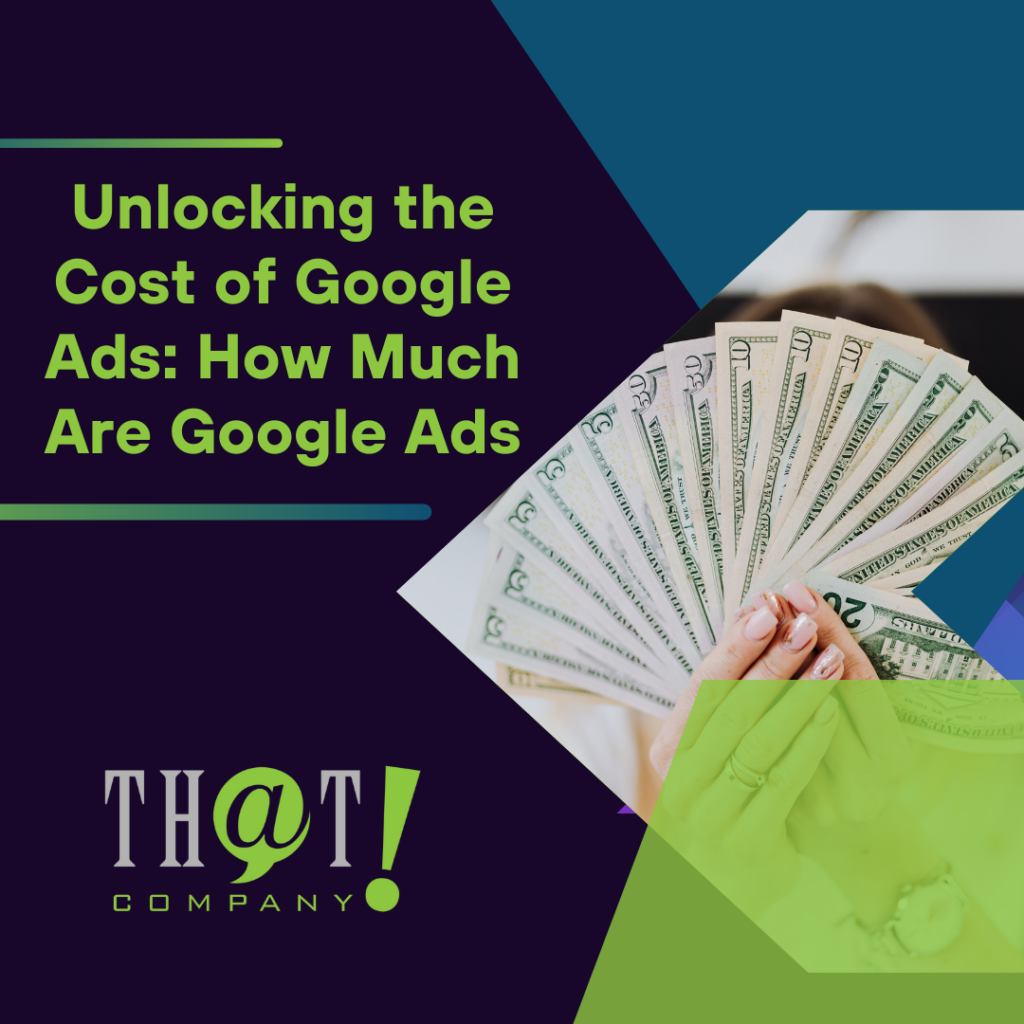
How much are Google Ads? It’s a common question with a not-so-simple answer. The cost depends on several factors, including the competition for keywords, the quality of your ads, and industry-specific dynamics. This article will delve into the specifics, providing you with the knowledge to understand and navigate Google Ads pricing. Expect no fluff; just the essentials for strategic budgeting and efficient spending on Google Ads.
Key Takeaways
- Google Ads costs are variable and influenced by factors such as industry, keyword competition, and ad quality, with the average CPC for businesses typically ranging between $0.11 to $0.50 for most companies.
- Effective Google Ads budgeting entails setting daily budgets derived from monthly spend, using ad scheduling for efficient displays, and choosing between manual and automated bidding strategies to control costs.
- Maximizing ROI on Google Ads necessitates improving Quality Score, employing negative keywords to prevent irrelevant clicks, and performing A/B testing of ads and landing pages to fine-tune campaigns.
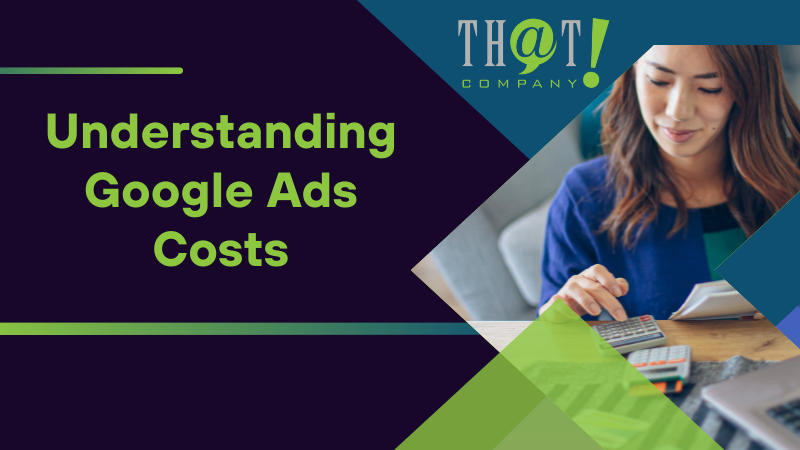
Understanding Google Ads Costs
Google Ads, the largest platform for Google paid search campaigns, offers a plethora of advertising opportunities, from Google search ads and display ads to shopping and video ads. But how much does it cost to advertise on this expansive platform? The answer is not straightforward. Google Ads costs are influenced by a myriad of factors including the specific industry, understanding of the customer profile, the competition for keywords, and the quality and relevance of ads. Knowing how much to spend on Google Ads can be crucial for maximizing your return on investment.
But the good news is, it’s not all about how much you’re willing to spend. The Google Ads auction system determines google advertising costs by allowing advertisers to bid on keywords. However, the winners aren’t chosen based on bid alone. Factors such as ad quality significantly impact the actual cost per click. On average, the cost per click for Google Ads typically ranges between $0.11 and $0.50 for most businesses, with the Search Network averaging between $1 and $2, while the Display Network tends to be under $1. Understanding google ads pricing and how much google ads can cost can help you make informed decisions for your advertising budget.
Industry Impact
Just as location influences the cost of real estate, industry impacts the cost of Google Ads. For example, industries like legal and accounting are known for having higher Google Ads clicks costs due to the high value of acquiring new clients. This is because in the professional services industry, a single new client has the potential to generate significant revenue, justifying higher costs per click and per lead.
On the other hand, businesses in the arts and entertainment vertical often have lower cost-per-click but need a larger customer base to achieve the revenue a single high-value client brings in more competitive industries. So, understanding the industry impact can give you a competitive edge in devising your Google Ads strategies.
Keyword Competition
In the world of Google Ads, not all keywords are created equal. The competition for keywords can significantly influence your Google Ads costs. For instance, shorter, high-competition keywords tend to be more expensive. However, long-tail keywords, which make up the majority of web searches, can be less expensive and as commercially valuable as these high-competition keywords.
But how do you find these cost-effective keywords? Google’s Keyword Planner is a valuable tool for getting estimates of average CPC amounts, assisting in the selection of cost-effective keywords in competitive markets. By understanding keyword competition, you can better manage your Google Ads costs and make your advertising more effective.
Ad Quality and Relevance
Another key player in the Google Ads costs game is ad quality and relevance. Google uses a metric called Quality Score to measure the quality of ads. This metric helps advertisers understand the effectiveness of their ads and improve their performance. The Quality Score is determined by the ad’s landing page experience and its relevance to the keyword. A higher Quality Score means that an ad is more relevant to users compared to competitors’ ads, and it can result in paying less per click while achieving a higher ad rank.
Cost Per Click (CPC) is another essential factor influenced by expected click-through rate, ad relevance, and landing page experience. A lower CPC helps to maximize budget efficiency. So, focusing on improving your ad’s Quality Score can not only enhance its performance but also keep your Google Ads costs low.

Budgeting for Google Ads
Now that we’ve understood the factors affecting Google Ads costs, let’s turn our attention to how to manage these costs effectively. Enter the world of budgeting. In Google Ads, you can set account budgets to manage how much you spend over a certain period. This provides you control over the total spend, and if the account budget is reached or the end date arrives, ads will no longer serve, preventing any further spending beyond the established budget.
The daily budget is another crucial part of your Google Ads budget. It can be calculated by dividing your monthly Google Ads spend by 30.4, the average number of days in a month. Starting with a low daily budget allows you to monitor campaign performance and make data-driven adjustments without the risk of overspending early in the campaign.
Setting a Daily Budget
Setting a daily budget for your Google Ads campaigns is a bit like setting a daily allowance for your child. You want to give them enough to do what they need to but not so much that they splurge all at once. To set a daily budget, take your monthly budget and divide it by 30.4, the average number of days in a month. But remember, this is just a rough estimate and not a guaranteed daily spend.
Ad scheduling is another nifty feature that can enhance your budget allocation. It allows you to choose specific hours or days to display your ads, based on when potential customers are most likely to be online. By tracking and focusing on the days and times when ads perform the best, you can make the most of your Google Ads budget and optimize the ad auction process through strategic ad placement. Google Ads determine the best times for your ads to be shown, ensuring maximum efficiency.
Bidding Strategies
Another crucial aspect of Google Ads budgeting is understanding and implementing effective bidding strategies. Bidding strategies in Google Ads include both manual and automated options that directly impact the costs of advertising campaigns. With manual bidding, you set your maximum CPC bid, which is the highest amount you’re willing to pay for a click.
However, there’s also a hybrid bidding strategy called Enhanced CPC (ECPC) that combines manual bidding with the smart bidding feature. ECPC adjusts bids for clicks that seem more likely to lead to conversions. This strategy allows you to get the best of both worlds, maintaining control over your bids while also leveraging Google’s machine learning capabilities to maximize conversions. Seeking help from an affordable SEO white label can help a lot.
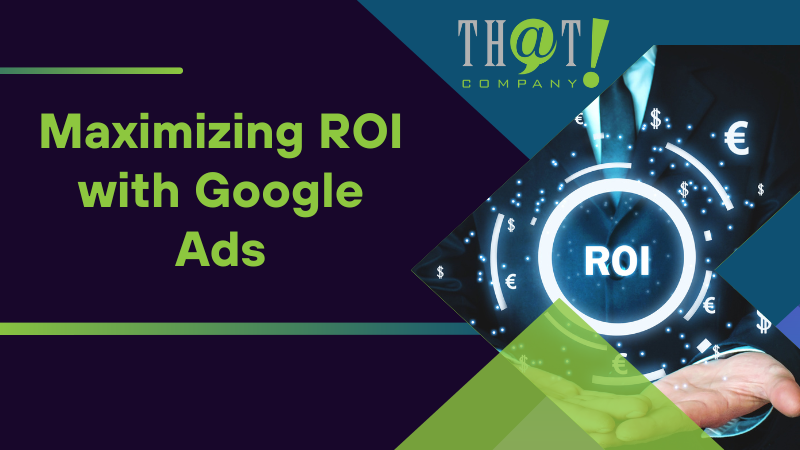
Maximizing ROI with Google Ads
Running Google Ads campaigns isn’t just about managing costs; it’s also about maximizing the return on your investment. Evaluating a campaign’s ROI is crucial to determine if the advertising on Google is providing good value for the cost. From enhancing Quality Score to utilizing negative keywords and conducting A/B testing, there are several strategies you can employ to improve your ROI.
The real proof of your Google Ads campaign’s success lies in the numbers. PPC management services from an agency typically cost between $501 and $3000 per month. The price range varies depending on the specific services and level of expertise offered. However, the benefits accrued from correctly implemented Google Ads strategies can far outweigh these costs, leading to a significant ROI.
Improving Quality Score
As we’ve mentioned earlier, Quality Score is a critical metric in Google Ads. But how can you improve it? One effective strategy is using Single Keyword Ad Groups (SKAGs). SKAGs enhance control and can improve Quality Scores by tailoring ad headlines to specific keywords, increasing relevance and the expected CTR.
Another way to boost your Quality Score is by optimizing your landing pages to align with user searches and ensuring they are mobile-friendly. A high Quality Score positively affects ad positioning and cost by lowering CPC, allowing ads to rank higher than competitors’ ads even with lower bids. Thus, improving your Quality Score is a surefire way to maximize your ROI.
Utilizing Negative Keywords
Negative keywords are like the bouncers at the club of your Google Ads campaign. They ensure that your ads don’t appear in searches irrelevant to your business, thus saving money on irrelevant clicks. By using negative keywords, businesses avoid displaying ads to users who are disinterested in their products or services.
For instance, if you sell custom-built computer parts, adding terms like ‘budget’ or ‘refurbished’ as negative keywords can exclude searches from users looking for pre-owned or low-cost alternatives. Using negative keywords effectively can improve your ad targeting and help maximize your Google Ads ROI.
A/B Testing Ads and Landing Pages
A/B testing is another excellent strategy for maximizing ROI with Google Ads. It allows advertisers to compare the effectiveness of different ad elements, such as headlines and descriptions, to identify optimizations that improve ad performance. But remember, best practices for A/B testing suggest testing one variable at a time, ensuring a large and representative sample size, and running the test for a sufficient duration.
Small changes in ads, such as modifying headline 1, while keeping other elements consistent, can lead to significant performance improvements. Conducting A/B tests on various ad texts and calls to action can help determine the balance between higher click-through rates and conversion rates.
By regularly monitoring and analyzing your A/B testing results, you can continually optimize your campaigns and maximize your ROI.
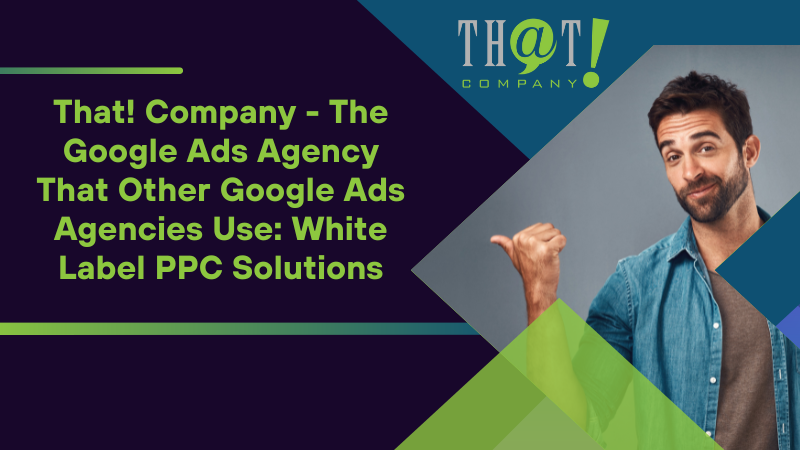
That! Company – The Google Ads Agency That Other Google Ads Agencies Use: White Label PPC Solutions
When it comes to Google Ads Management, That! Company stands out. Known as ‘The Google Ads Agency That Other Google Ads Agencies Use’, That! Company is a white label marketing agency that distinguishes itself in the marketplace. It provides white label Google Ads Management for agencies looking to expand their services and enhance client satisfaction.
The successful white label PPC campaigns managed by That! Company are built on:
- Comprehensive planning
- Precise targeting
- Continuous monitoring
- Data-driven optimization
So whether you’re a small business or a large corporation, partnering with That! Company can help you achieve your Google Ads goals while keeping costs under control, and leveraging the power of the Google Display Network.
Benefits of White Label PPC
White label PPC services like those offered by That! Company have numerous benefits for marketing agencies. They reduce costs by eliminating expenses for dedicated software, training, and additional staff. Agencies can also benefit from expert PPC management resources, enhancing campaign success without the need to hire specialists in-house.
White label PPC services offer several benefits for agencies:
- Streamline operations by centralizing management of PPC tasks, freeing up time for other marketing initiatives
- Improve client retention by meeting a broader range of digital marketing needs, leading to higher client satisfaction
- Provide operational flexibility to scale PPC services up or down according to business demand, without being constrained by in-house capabilities.
Popular Platforms for White Label PPC Campaigns
White label PPC campaigns often leverage multiple platforms to maximize reach and targeting capabilities. Google Ads is a key platform for white label PPC, valued for its extensive reach across the internet and advanced targeting options. But Google Ads isn’t the only game in town. Microsoft Advertising is frequently utilized for white label PPC campaigns, serving as a beneficial complement to Google Ads.
Social media networks like:
also offer diverse ad formats and audience targeting options, making them popular for white label PPC. By leveraging these platforms, That! Company can help you reach your target audience wherever they are online.
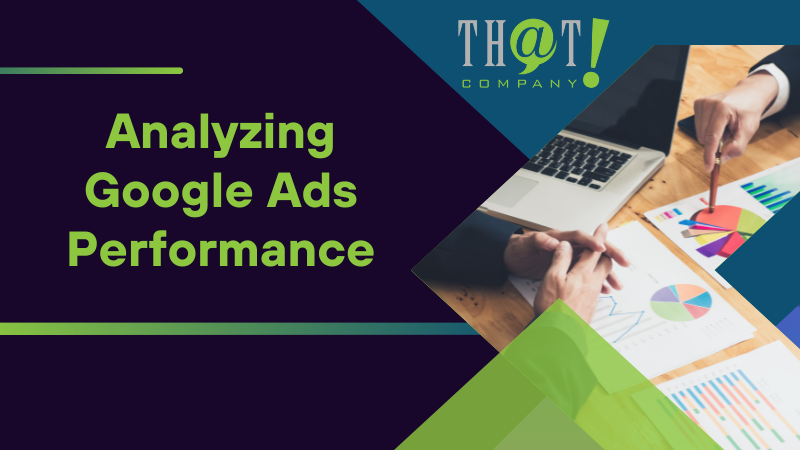
Analyzing Google Ads Performance
Assessing the performance of your Google Ads campaigns is as crucial as setting them up. This evaluation is vital for understanding the success of your advertising investments and guiding your future decisions. Tracking a range of key metrics gives insights into how well your campaigns are doing and where there’s room for improvement.
Linking your Google Ads account with Google Analytics can provide valuable insights into campaign performance and enable real-time ad optimization on the Google Search Network. Regular review of account data and adjustments, such as adding irrelevant search terms as negative keywords, are necessary to enhance campaign relevance and efficiency in a changing digital marketing environment.
Click-Through Rate (CTR)
Click-Through Rate (CTR) is a critical metric in Google Ads. It indicates the percentage of users who click on an ad relative to the number of times the ad is shown, serving as a measure of the ad’s relevance and appeal to the audience. A high CTR suggests that the ad is relevant and useful to the audience, reflecting the ad’s effectiveness in capturing user attention and compelling them to visit the advertiser’s website.
Improving an ad’s CTR can positively influence its Quality Score, which can lead to reduced costs per click (CPC), thus making CTR optimization financially beneficial for advertisers. By creating more compelling ad text and ensuring that the ad accurately matches the intent of the targeted keywords, you can enhance your CTR.
Cost Per Conversion (CPC)
In the world of Google Ads, Cost Per Conversion (CPC) is another crucial metric. You can calculate the average CPC by dividing the total cost of clicks by the total number of clicks. For example, for two clicks costing $0.20 and $0.40 respectively, the average CPC would be $0.30, which is the total cost of $0.60 divided by 2 clicks.
CPC tracking is essential for advertisers to ensure their Google Ads spending is aligned with their marketing goals and is being used cost-effectively. By regularly monitoring your average CPC, you can better manage your Google Ads costs and ensure your advertising is on track to achieve your goals.
Return on Ad Spend (ROAS)
Return on Ad Spend (ROAS) is a profitability metric that compares the revenue generated from conversions to the costs of the ads. A higher ROAS indicates a more successful campaign, demonstrating the efficiency of ad spend in generating revenue.
Calculating ROAS in Google Ads helps advertisers measure the revenue earned for every unit of currency spent on their campaigns, which informs their future advertising budgeting decisions. The reported return on investment (ROI) for Google Ads advertising is $2 in revenue for every $1 spent, underscoring the significance of a thorough ROAS analysis.
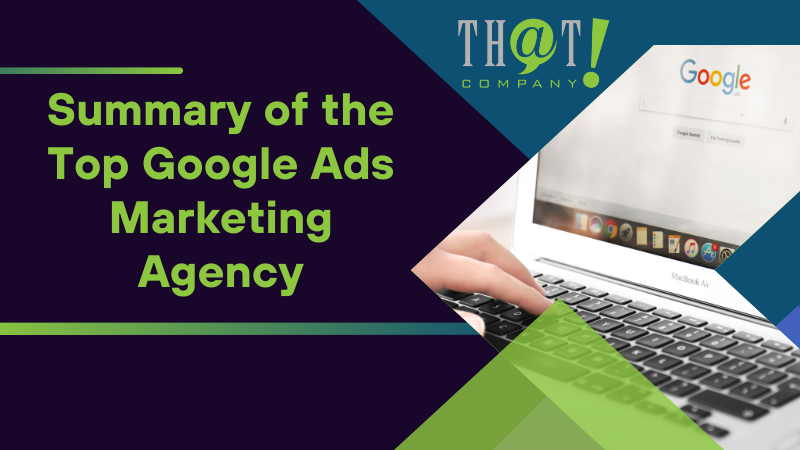
Summary
In conclusion, understanding Google Ads costs and effectively managing them can significantly enhance your advertising success. Factors such as industry, keyword competition, ad quality, and relevance play a crucial role in determining costs. Budgeting, implementing effective bidding strategies, and maximizing ROI through improving Quality Score, utilizing negative keywords, and A/B testing are key to running successful campaigns. With comprehensive planning, precise targeting, continuous monitoring, and data-driven optimization, agencies like That! Company can help you navigate the world of Google Ads, maximizing your ROI and ensuring your advertising dollar goes the extra mile.
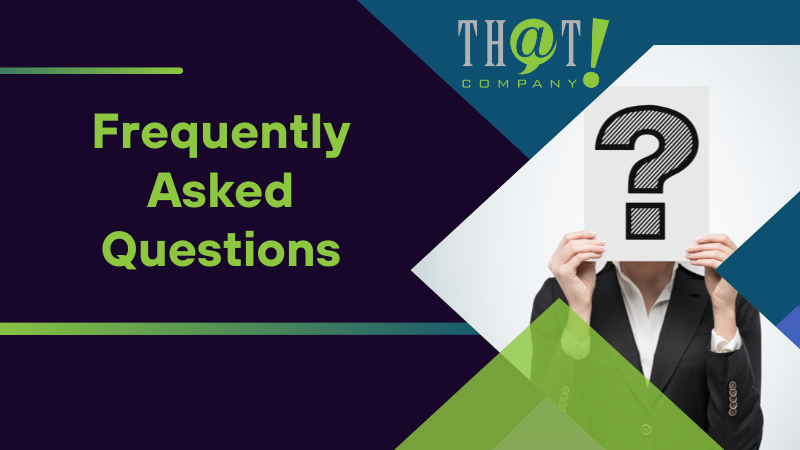
Frequently Asked Questions
Is $500 dollars enough for Google Ads?
No, $500 is not enough for Google Ads. It’s important to consider the cost-per-lead for your industry, and in most cases, $500 won’t yield many leads.
Is using Google Ads free?
No, using Google Ads is not free. Advertisers need to pay each time a user clicks on their ad as part of the pay-per-click model.
Why did Google Ads charge me $50?
Google Ads charged you $50 because that’s the initial spending limit set by Google to ensure your ability to make payments before proceeding with your advertising campaign. If you spent $50 or more during your first 30 days, Google charges you immediately and restarts your billing period.
Are Google Ads worth the money?
Yes, Google Ads are worth the money because they provide a cost-effective way for businesses to reach a large, targeted audience and offer flexibility in managing the ads.
What factors influence the costs of Google Ads?
The costs of Google Ads are influenced by factors such as the industry, customer profile, keyword competition, and the quality of ads. Understanding these influences can help in managing ad costs effectively.

